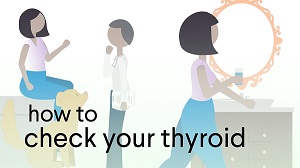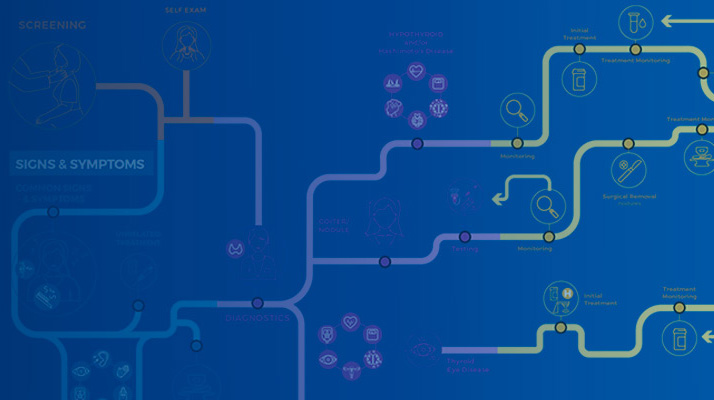What Is Graves’ Disease?
Graves' disease is an autoimmune disorder which causes the immune system to overstimulate the thyroid gland and produce too much thyroid hormone. This can eventually cause hyperthyroidism (overactive thyroid).
What Causes Graves’ Disease?
Graves’ disease is caused by the immune system mistakenly stimulating the thyroid which causes it to become overactive. It is unknown why this happens, and there are many factors that can contribute to its development including genetics and family history, environmental exposures, already having an autoimmune disorder, pregnancy, smoking, and possibly even stress.
Graves’ disease is the most common cause of hyperthyroidism in the United States and is 7 times more likely to affect women.
What Are Common Symptoms of Graves’ Disease?
Symptoms associated with Graves’ disease may be gradual and can include:
- Anxiety
- Weight loss
- Heat intolerance or sweating
- Muscle weakness
- Trouble sleeping
- Rapid heartbeat
- Hand tremors
- More frequent bowel movements or diarrhea
Some people with Graves’ disease also experience inflammation, swelling, and bulging of the eyes (Graves’ ophthalmopathy or thyroid eye disease).
Common signs of Graves’ ophthalmopathy include:
- Bulging eyes
- Dryness or grittiness of the eyes
- Puffy or retracted eyelids
- Pressure or pain in the eyes
- Reddened or inflamed eyes
- Light sensitivity
- Double vision
- Vision loss
How is Graves’ Disease Diagnosed?
To diagnose Graves’ disease a health care professional will evaluate your medical and family history, as well as order tests including:
- Blood tests: Blood tests help look at the levels of the thyroid-stimulating hormone (TSH), the two thyroid hormones (T3 and T4), and thyroid antibodies.
- TSI (thyroid-stimulating immunoglobulin) and/or TRAb (thyrotropin receptor antibodies): antibodies often found in the blood when Graves’ disease is the cause of hyperthyroidism.
- Radioactive iodine uptake: By giving you a small amount of radioactive iodine, a radiologist can measure the rate at which the thyroid absorbs iodine and obtain an image to see if the thyroid is overactive.
- Imaging tests: Ultrasound, and occasionally CT scans or MRI tests, can be used to look at your thyroid, especially if your provider thinks there is a thyroid nodule in addition to Graves’ disease.
- Referral to an eye doctor: If your health care professional suspects you have Graves' ophthalmopathy (thyroid eye disease), you may be referred to an ophthalmologist.
Visit our Journey for Patients with Thyroid Disease to learn more about Graves’ disease diagnosis.
Learn More
How is Graves’ Disease Treated?
Treatment for Graves’ disease can include one or a variety of the following:
- Radioactive iodine therapy: Radioactive iodine is a capsule or liquid that destroys the overactive thyroid cells over time.
- Anti-thyroid medications: Used to slow down how much thyroid hormones your body makes. Anti-thyroid medications are currently the most common treatment option.
- Beta blockers: These medications help block the effects of hormones on the body, and are especially helpful in the beginning when waiting for other treatments to take effect.
- Surgery: Surgery usually takes the form of thyroidectomy (complete removal of the thyroid gland). After surgery, medications can be taken to supply the body with normal amounts of thyroid hormone.
Don’t ignore shaky hands and a rapid heartbeat. Contact your health care professional if you are experiencing any common symptoms related to Graves' disease.
Visit our Journey for Patients with Thyroid Disease to learn more about Graves’ disease treatment options.
Learn More



